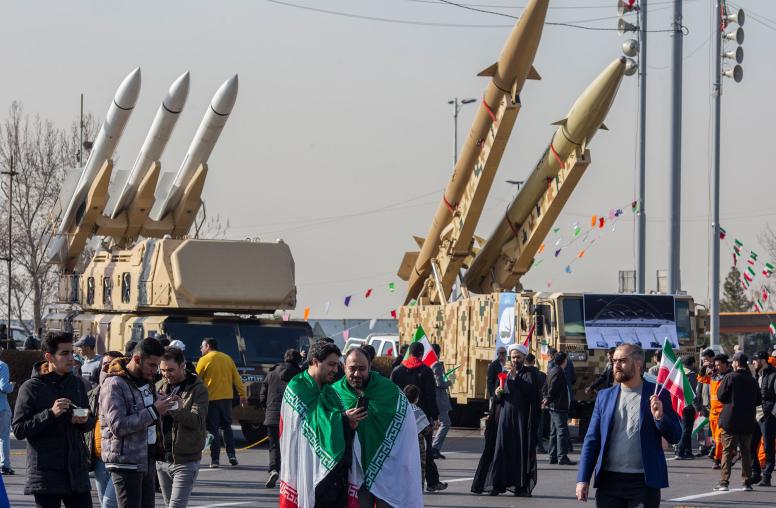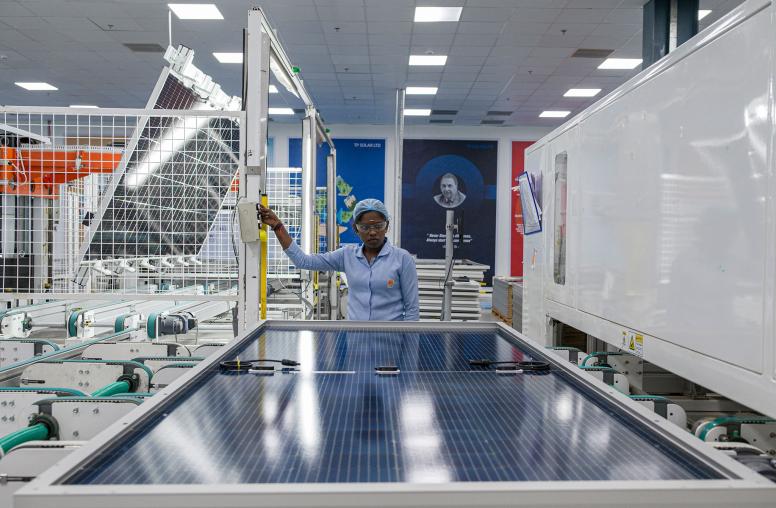Coronavirus Crisis: U.S.-China Media War Couldn’t Come at a Worse Time
China’s recent expulsion of U.S. journalists undermines international trust in the transparency of its response to COVID-19.
China’s move to expel U.S. journalists from the country last week comes at a time of great need for accurate information about COVID-19. The move is part of a broader Chinese effort to control the global narrative about the pandemic and is especially dangerous right now—as cracking down on foreign media further undermines trust in China’s ability to respond to the pandemic with transparency.

The escalation started last month, when Beijing expelled three Wall Street Journal reporters in response to a headline that called China the “sick man of Asia.” The Trump administration responded by imposing new limits on the number of Chinese nationals working for Chinese state media outlets in the U.S., reducing the number from 160 to 100. Then, last week, China announced it was revoking the press credentials of more than a dozen American foreign correspondents at the New York Times, Wall Street Journal, and Washington Post, effectively gutting the U.S. press corps in the mainland. Since then, several Chinese staff working for U.S. media outlets have also been forced out of their jobs.
Protecting China’s Preferred COVID-19 Narrative
First of all, we need to be clear—the U.S. and Chinese actions are not equivalent. The U.S. restrictions affected Chinese media outlets such as Xinhua and CGTN, which are under the control of the Chinese Communist Party. China has argued its moves to revoke U.S. press credentials in response were “entirely necessary and reciprocal countermeasures” and “legitimate and justified self-defense in every sense.” But restrictions on independent media, which can play an important role in holding governments accountable, and on state-run media, which cannot challenge government actions, do not lie on the same plane.
It should also be clear that China’s move to expel journalists is not separate from Beijing’s efforts to influence the global narrative surrounding COVID-19. Now that China appears to have brought the domestic outbreak under control, Beijing has sought to showcase the successes of its approach and cast itself as a leader in the global response. To this end, the Chinese government has mounted a campaign to supply much-needed testing kits, masks, and ventilators to countries in Europe, Africa, and Southeast Asia, and has sent its medical experts and hosted teleconferences to meet with other countries’ health experts. With fewer foreign journalists working for foreign, independent media in China, there will be fewer journalists to report stories that deviate from this message.
Let’s not forget that China is still cracking down on voices critical of the government’s management of the crisis. China was slow to divulge information about the outbreak in early weeks and silenced those who did. The most prominent whistleblower, Wuhan doctor Li Wenliang, was officially reprimanded for sharing information with other doctors about possible novel coronavirus cases in December, and later died of COVID-19. An official probe last week exonerated Li and recommended the reprimand be withdrawn. And earlier this month, a political commentator and real estate tycoon disappeared after circulating an essay criticizing the government for not dealing with the crisis more openly and quickly. With fewer foreign journalists in China, it will be harder for the world to see these stories, undermining trust in how China deals with the virus going forward.
The Need for International Reporting on China
Independent reporting on how COVID-19 is affecting China still matters even though China appears to have weathered the peak of the crisis. Last week, China appeared to hit a milestone when its national health commission reported no new locally transmitted cases for the first time since the outbreak, though concerns remain about possible unreported cases, particularly asymptomatic ones. But China remains worried about people who contracted the virus elsewhere coming into the country, and has instituted strict screenings and quarantine for those arriving from abroad. As China lifts the lockdowns that curbed infections and daily life begins to return to normal, concerns about the risk of a potential second wave could grow, particularly as the virus spreads among China’s neighbors. Even after the outbreak winds down, there will continue to be surveillance and privacy concerns about the cell phone tracking app and other technology used to monitor those with the virus. The expulsion of U.S. journalists casts lingering doubt on information disclosed by China about how the country is preventing new infections or rolling back the strict controls that were put in place.
And in Washington, the expulsion of journalists has deepened the U.S.-China diplomatic rift at a time when constructive cooperation is needed most. It also coincides with the U.S. evacuating much of its diplomatic staff from China, limiting many levels of communications just as tensions at the top run high. To be sure, U.S. officials risked retaliation against U.S. reporters when they imposed the limits on Chinese state media, and a global pandemic is no time to be playing a blame game. But China’s restrictions on foreign journalists do nothing to help address the crisis.
A global crisis is when trust in information matters the most. There are many civil liberties and personal freedoms that may need to be sacrificed or limited to grapple with a public health crisis—but press freedoms that help guarantee access to information should not be among them. Allowing media to report on the full picture of China’s COVID-19 experience can help other countries weigh the costs and benefits of the measures they are considering. Ultimately, expelling reporters from the country that was the source of—and is still grappling with—COVID-19 is not conducive to the trust that’s needed to move forward.



